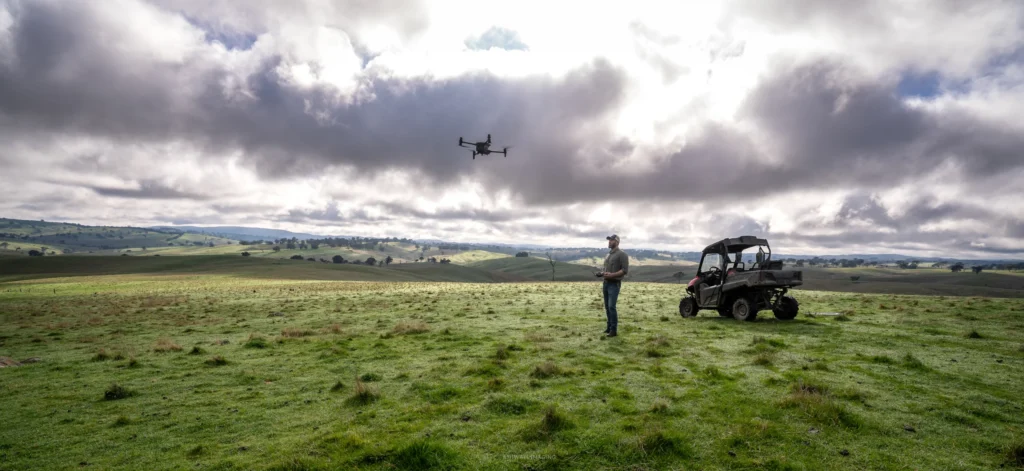Fundraising as an AgTech Startup in Australia – Lessons from the Trenches

A friend and fellow founder in the Uncrewed Aviation Systems space recently asked me for advice on securing investment, based on my fundraising journey with Drone-Hand PTY LTD.
While I am by no means an expert as we are still raising, I’m inspired by last week’s AgriFutures evokeAG theme, “common ground”, and I feel it’s important to share any lessons learned -particularly the hard ones.
Raising capital as an AgTech startup is a long and challenging journey, particularly in today’s economic and socio-political climate. AgTech already struggles to attract investment due to its longer perceived time to return compared to sectors like FinTech. Additionally, many investors outside the industry require significant education to fully grasp the pain points, market potential, and value proposition of AgTech solutions. This added layer of complexity makes securing funding even more difficult, requiring founders to bridge the gap between technical innovation and investor expectations.
But investors are out there—if you’re willing to work the networks and prove your tenacity.
Where to Start?
Avoid VC too early:
Bootstrap for as long as possible, even if it means supplementing with a “Friends & Family” round and/or early-adopter pre-sales.
If possible, consider alternatives like debt financing, crowdfunding, or strategic corporate investors before seeking VC.
- Who in your customer base has already shown an indication that they’d get behind you?
- What partnerships can you develop further to take some of the weight off your shoulders?
Securing investors from within your customer base not only provides funding but also strengthens industry credibility and community engagement. It demonstrates that your customers not only believe in your product but are willing to invest in its success, reinforcing market demand and increasing buy-in from future investors.
This creates a powerful network effect, turning early adopters into advocates who help drive adoption and long-term growth.
Use Open Resources:
If you’re determined to raise from VC or Angel investors, start with resources like Airtree Open Source VC (link). Airtree’s resources are some of the most comprehensive for founders.
There are also many other online databases of VCs and Angel investors (link). Just spend some time searching the web and you’ll quickly find there is a plethora of free resources out there.
Search LinkedIn for VCs, Family Offices, investment funds, and filter by sector focus. Identify funds that align with your startup—AgTech, UAV, SaaS, MedTech etc or industry-agnostic investors.
Once you’ve identified who your target investors might be, research their portfolios, fund size, and liquidity—do as much due diligence on them as they will do on you. It’s not unusual to be courted by a “VC” only to learn they haven’t raised their own fund yet.
Network Smartly:
Unless you’ve mastered the art of the perfect deck, it’s easy to be overlooked. Cold applications on VC websites rarely work as investment firms receive hundreds of pitch decks a week. Instead:
- Find networking events they’re attending or speaking at.
- Introduce yourself in person over multiple events to build recognition.
- Join pitch events judged by VCs—it’s a great way to sharpen your pitch and build awareness.
- Seek warm introductions. These are the most effective. Fellow founders rarely have capacity to make intros, but portfolio founders, industry mentors and advisors can be a great way in.
Consider programs that can include funding like Beanstalk AgTech Drought Venture Studio (agriculture), Antler or Startmate (industry agnostic).
While the cheque sizes can be “small”, these kinds of programs provide a strong education on rapid-growth startups, commercialisation & VC engagement. Once backed, their networks can help with future raises and rapid scaling.
Join startup & investor communities.
Groups like Innovation Bay and The Startup Network offer direct access to other founders, investors and industry. They also often provide direct pitching opportunities and curated networking events to better increase your chances of getting that “perfect introduction”.
Alternative Funding Options.
Equity crowdfunding ( VentureCrowd , Birchal ) can be an easier way, but keep in mind that it usually requires marketing spend for a successful campaign.
Debt financing (revenue-based or equity-linked such as Tractor Ventures ) is an option too if you want to delay dilution while growing.
Final Thoughts:
Fundraising is a marathon, not a sprint. Build your network, do your research, and stay persistent. Tenacity is just as important as clear problem-solution fit, Just Keep Going.
And remember—VC is only one path.
While venture capital can accelerate growth, VCs are accountable to their investors and often prioritize rapid returns and aggressive scaling, making them sometimes a better fit for later-stage funding. For early-stage startups, alternative funding options—such as grants, strategic investors, revenue-based financing, or crowdfunding—can provide more flexibility and control, allowing you to build traction before raising institutional capital on stronger terms.
There are many ways to fund and scale a great company.
You can do this.





